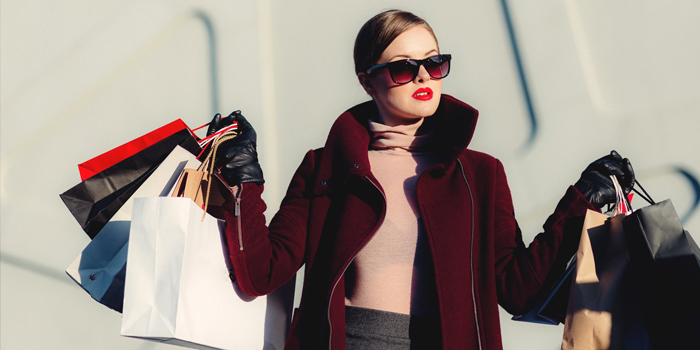
As the COVID-19 crisis forced non-essential stores to shut their doors earlier this year, luxury retail and high fashion felt the full impact — falling off of many people’s wish lists as they halted travel plans, attended meetings from home and began to re-think their priorities.
Post-pandemic, this means a number of changes. While some of your favourite brands will still be there when economies re-open, the way we purchase luxury goods and what’s on offer may look different than before.
Doug Stephens, founder of Retail Prophet, says the revenue interruption has been devastating for the luxury industry.
“One of the first things to lock down was non-essential retail, which most luxury products and categories find themselves in,” he says.
Indeed, a recent report on the state of fashion in 2020 by McKinsey & Company and The Business of Fashion estimates a global revenue contraction of 35-39 per cent year-on-year for the personal luxury goods industry —fashion, accessories, watches, fine jewellery and high-end beauty — with growth of one to four percent in 2021.
The luxury sector may feel the results of the lockdown more acutely than other segments of the fashion industry, says the report, because of its’ reliance on travel retail, lower online presence and high dependency on experiential in-store retail
Now, says Stephens, the question for luxury brands is at what point will these purchases make sense again for consumers?
“We’re still very much in a safety and security orientation right now,” he explains. “We don’t have a vaccine for this virus; we don’t know when that’s going to be produced or if it’s going to be produced. We also don’t know the full extent of the economic damage that the virus is going to propagate on our economy.”
“As long as those things remain question marks, we can’t really move to the next phase where we begin to rebuild our worldviews, and get back to the purchases that give us a sense of self-value, self-worth, self-esteem —much of which would fall into the luxury category.”
Mina Ely, a Toronto-based luxury retail strategist and brand builder, says people will start shopping again. Her clients, for example, are excited about buying new wardrobes once they are back to attending in-person meetings, going out to dinner and travelling.
But whenever that happens, the luxury industry will have likely already gone through a reinvention.
Indeed, brands have been implementing significant changes. In late May, Gucci announced plans to move to seasonless collections, pronouncing the fashion calendar obsolete.
Ely says she expects to see more ‘season layovers,’ as well as brands favouring small collections.
“They’re not going to do anything big; they’re not going to be inventoried out to the hills; they’re going to be very tight and very cautious with how they’re budgeting and what they’re bringing in and who they’re selling to,” she says.
“In terms of their essentials — they’re still going to do their flip flops, their shoes, their belts — but their haute couture, their really high-end ready-to-wear stuff, it’s not going to be flying off the shelves.”
As Stephens explains, another consequence of the pandemic may be a consolidated industry. Even if some countries are ready to resume luxury purchases, others may take some time.
“Even if 25 or 30 per cent of consumers feel that way, that’s an insurmountable problem for a brand which is trying to sell products to a market, because a 20 or 30 per cent gap in a market could be devastating.”
“The companies and brands that will make it through this crisis are brands that were a) either doing extremely well prior to, so firing on all cylinders and built to weather the storm, as well as brands that have loads of cash in the bank,” he adds.
Ely expects customers to be wary of venturing into physical stores which will impact both retailers’ footprints — with many opting to downsize locations and perhaps launch smaller pop-up stores — as well as the shopping experience.
Luxury buying, says Ely, is about the experience and activating the senses. Even in a world where clients don’t want to enter a store, they will still want to know what they’re buying.
This, she says, will likely drive growth in personal, straight-to-home services catered to the consumer — either via a stylist, or an offering implemented by the brands and stores themselves.
“You’re not going to buy a Ferrari online. You’re not going to buy a Bentley online,” she says. “People still want to try it, they want to see it, they want to have the experience.”







